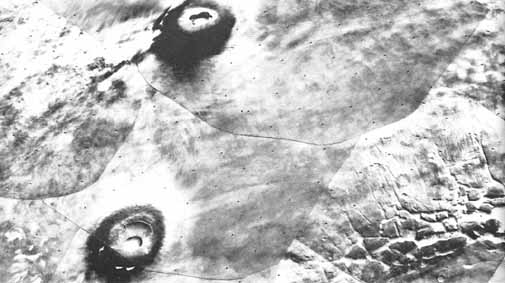















|

[2] MARS has long had a special fascination for man. As early as the 17th Century, it was recognized that Mars had polar caps and rotated once every 24 hours, much like the Earth. Perception e of the planet as Earth-like was subsequently reinforced by observations of white patches that were interpreted as clouds. Late in the 19th Century interest was enormously heightened by reports of canals on the surface. This led to speculation that life might thrive there under climatic conditions similar to those on the Earth and that the canals might be the product of an advanced civilization.
Fact has proved to be nearly as bizarre as fiction. Although the canals were an illusion, and the possibility of life now seems less likely, the planet retains it fascination.
Mars is a geologist's paradise. Many features familiar on Earth are displayed on a vast scale made more awesome by the planet's modest size. Great canyons are incised into the surface, huge dry river beds attest to past floods, volcanoes tower to heights almost three times that of Mt. Everest, and vast seas of sand surround the poles. Global dust storms regularly cover the entire planet. At the poles, caps of carbon dioxide advance and retreat with the seasons.
This book incorporates images acquired by the Viking orbiters, beginning in 1976. The pictures here represent only a small fraction of the many thousands taken, and were chosen to illustrate the diverse geology of Mars, and its atmospheric phenomena. We hope they will also arouse the same wonder and excitement that we experienced on first seeing them.